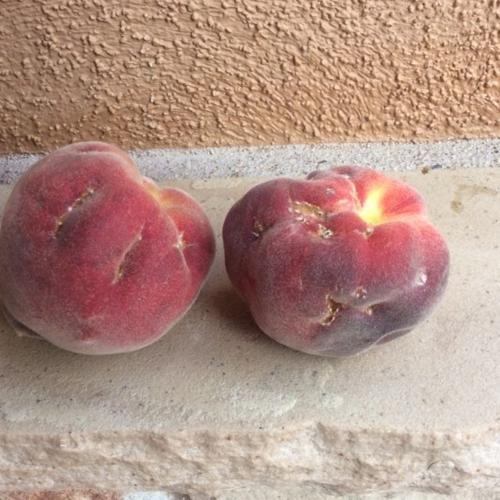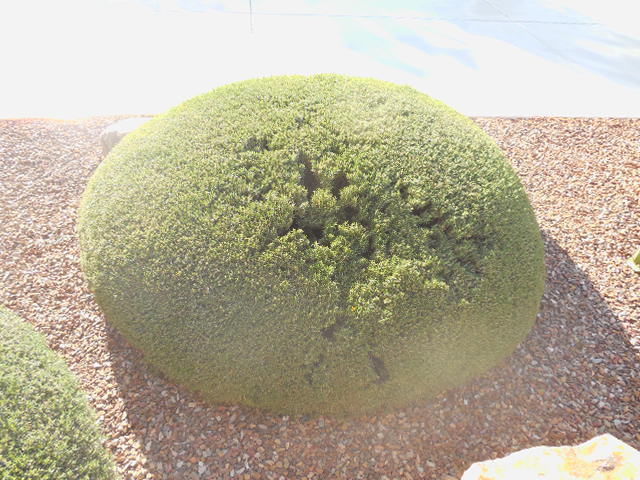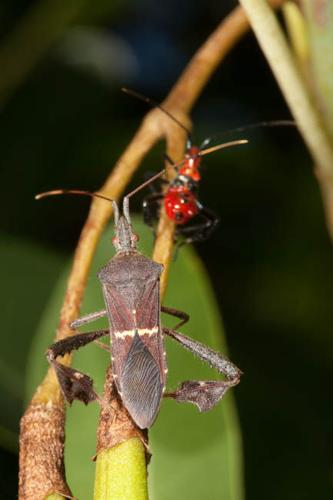Q: We have 30-year-old Rhaphiolepis indica planted in a slightly raised planter. One side was particularly hit hard by the freeze a few years ago (17 degrees in Tucson in February), or so we thought, until we caught a couple of deer munching on that particular shrub. It never recovered from the munching. The shrubs on the other side of the planter were doing well until four deer became emboldened and began munching on the flowers and new leaf growth on the other side near our front gate. Those plants, too, have stopped putting on new leaves and weeks later look exactly like the deer left them. What can we do to rejuvenate the plants/encourage them to grow again?
A: Deer munching is definitely a hazard for Rhaphiolepis indica (Indian hawthorn), so some sort of fencing or detours around your shrub are required before you spend a lot of time on rejuvenation.
The best time to prune is around May or when it is finished blooming. You can selectively prune out the damaged branches where deer were feeding. From your photo the shrub looks pretty full and selective pruning should help open it up to more light, air, and water as well. Otherwise, continue to provide sufficient water, fertilize annually and monitor deer activity as needed.
Q: I am sending two photos of my desert willow tree, now in its fourth spring. The buds form, grow and then dry out before opening. Have taken samples to Mesquite Valley Growers. They see no evidence of pests or disease, and recommended more water and fertilizer. The leaves seem smaller and shorter than others I see.
A: I agree with Mesquite Valley Growers; the symptoms you describe are likely related to insufficient watering. The recommended schedule for desert trees is once every two to three weeks in the spring, summer, and fall to a depth of 24 to 36 inches. An annual spring fertilizer application wouldn’t hurt either, making sure the fertilizer is watered in to reach the absorbing roots.
Q: What is going on with my rosemary bush? Two days ago I looked at the bush and discovered damage.
A: Rosemary (Rosmarinus officinalis) is a shrub that grows well in the desert. The natural form is shaggier than the sheared version you have growing. The damage you are seeing is likely a result of regular shearing of the foliage. Often shearing creates a shell of green that prevents light from entering the inner parts of the plant. Eventually dead spots will occur and regrowth from those branches will not likely happen. A better treatment would be less frequent light pruning as necessary and in a more selective fashion to allow the plant to achieve its natural form and to open up the plant a bit to light, air, and water.
Q: I purchased this sugar bush at Desert Survivors Native Plant Nursery two years ago. It chronically looks like it isn’t getting enough water; there are dry, brown leaves. It is planted in desert soil with a cactus mix amendment. It is on a shrub line that runs twice a week right now, for 2½ hours. I have played with the emitter flow and am putting about 20 gallons each application. It gets sun until about 3 p.m. Is there anything I can do to help it thrive?
A: Sugar bush (Rhus ovata) is a moderate water user but twice per week at 20 gallons each application seems like a lot of water for a native shrub. If you aren’t checking to see how deep the water is going, I suggest using a soil probe to determine the depth of the watering. Ideally, water should reach a depth of 24 to 36 inches. I recommend backing off your irrigation to once a week for the summer and once every two weeks in the spring and fall.
Overwatering sometimes shows similar symptoms to underwatering, so looks can be deceiving.
Q: This year, we have some peaches with dimples. The fruit is rotten inside. Could it be a plant pathogen of some kind?
A: The short answer is yes. Your peaches are likely suffering from a pathogen as a result of insect feeding damage. The prime suspect in this case is the leaf-footed bug. These insects have piercing-sucking mouthparts and while feeding on young developing fruit leave scars that are known as cat-facing and sometimes this feeding activity will introduce fungi that may cause the rot.
Leaf-footed bugs are common in our area and may feed on a variety of plants including pomegranate, pecan, citrus, and peaches. They are difficult to manage once in the adult stage because they can fly and move about quickly.
There are insecticides available, but they are only effective on the young bugs. These insecticides are harmful to bees, so take care to avoid spraying plants in bloom. Monitoring for and removing egg masses in the early spring is another tactic that is potentially more successful if you are persistently looking in the spring when eggs are laid and young bugs are emerging from them.






